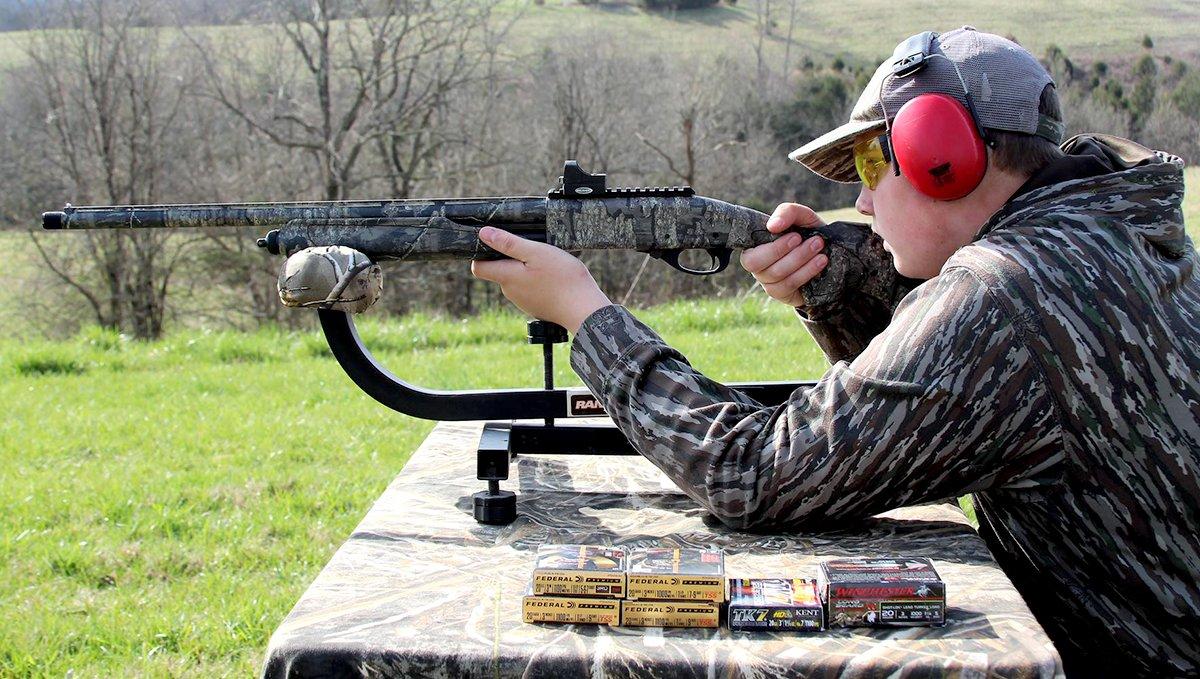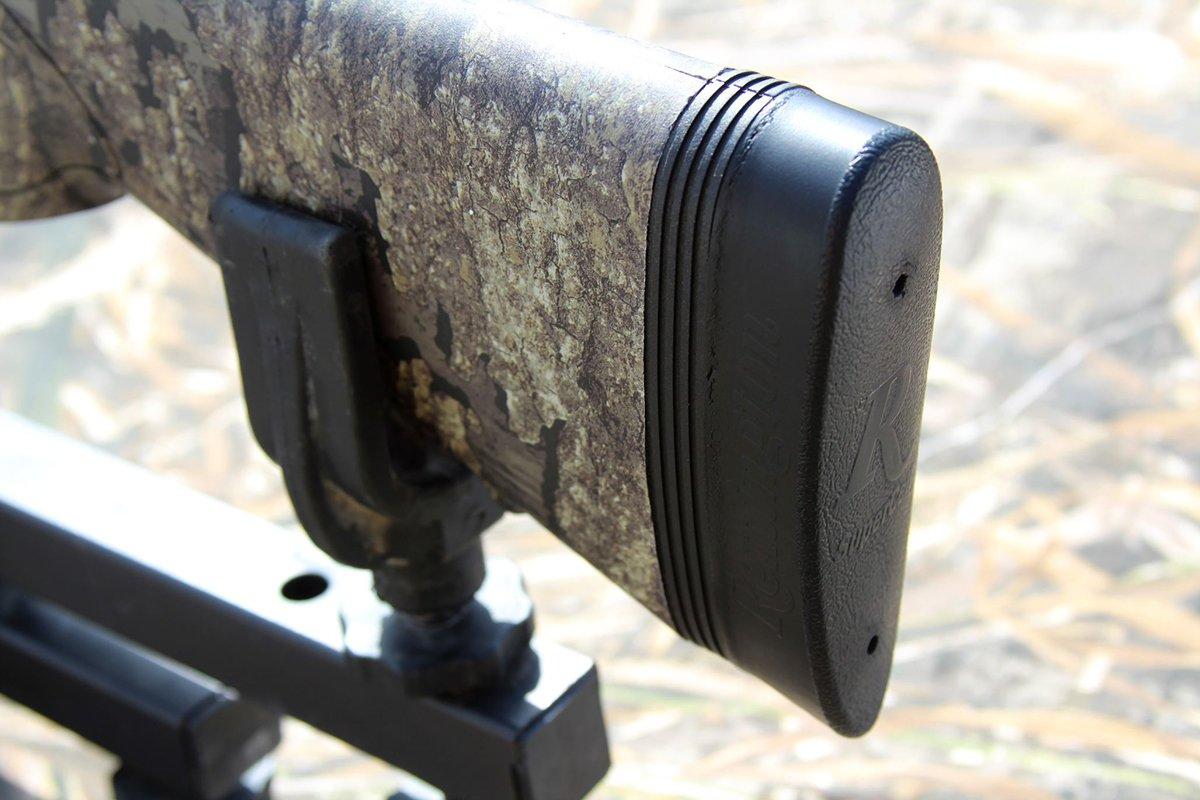From shotgun and load selection to patterning and practice, here's how to create the perfect turkey gun for a new hunter
With youth turkey seasons just around the corner, now's the time to get your young hunters outfitted with the right gun and load combination. Not long ago, a suitable turkey gun was defined as a 12-gauge shooting a 3-inch magnum turkey load … at the very least. Sometimes, that was a problem. Twelve-gauges are heavy and they kick, and that made it tough on young hunters (and adult ones too).
Luckily, advances in ammo and choke tube technology now allow us to put together an effective, lightweight, low-recoil turkey gun that new hunters of all sizes, shapes, and experience levels will love. With modern TSS (Tungsten Super Shot) loads, and even some advances in lead loads, a lightweight 20-gauge or even a .410 can reliably put a gobbler on the ground at ranges that were once only within the realm of 12-gauge guns.
After raising three kids in the turkey woods, and mentoring several more once mine were old enough to hunt on their own, I've picked up a few tricks for setting up an effective shotgun that will fit even the slightest of young hunters.
1. Pick the Right Gun
If light weight and low recoil are your main concerns, check out a .410 break-action single shot, like the CVA Scout in Realtree Timber. Just a few years ago, even the mention of turkey hunting with a .410 would be met with jeers and raised eyebrows. But modern TSS loads have transformed these little guns into turkey killers. Now legal in 40 states (check your regulations), .410 shotguns have entered the mainstream turkey gun conversation. The Scout weighs in at 6 pounds and comes equipped with a JEBS turkey choke and a Durasight scope rail. With an adjustable length of pull that ranges from 13 to 14 inches, the little gun handles well for even the smallest shooters and comes from the factory with an excellent recoil pad, making an already light recoiling load even easier to shoot.
If your young shooter can handle the added weight and recoil of a 20-gauge, a youth model pump-action is an excellent choice. Modern choke / load combinations for 20-gauge guns are so efficient that I have set up a youth model Remington 870 as my personal turkey gun. With little tradeoff in down-range performance verses a magnum 12-gauge, but with a much lighter and more compact frame that is a joy to carry through the woods, the little pump will fit shooters of any size.
Like the option of a fast follow-up shot in a compact, 6-pound gun that young shooters can handle with ease? Take a look at the gas operated Escort PS Youth model available this year in Realtree Timber. While the semi-auto action doesn't actually lesson the force of the recoil, it does lessen the felt impact by bleeding some of the energy off to cycle the action. The Escort PS features a 3 chamber, comes with five choke tubes, a quick-swinging 22 barrel, and an excellent recoil pad so practicing isn't a painful chore for your young hunter.
(Don't Miss: Tips for .410 Turkey Hunting)
2. Choose the Right Ammo.
Turkey hunting with a 20-gauge used to mean getting super close to the bird for reliable performance. But modern shells loaded with TSS pack small, super-dense shot into the payload, with No. 9 TSS pellets carrying as much energy as No. 5 lead, but with a far higher pellet count. Put another way, a 20-gauge TSS load is just as lethal (if not more so) on 40-yard gobblers as a 12-gauge lead load. The downside of TSS, of course, is that it's very expensive — but since you're not shooting much in a turkey season's time, it's worth it.
3. Easy on the Choke
Experienced turkey hunters love to see super-tight shot patterns at extended distances. But those tight patterns at 30 or 40 yards come at a price when turkeys work in close. Pattern spreads inside 20 yards measure just a few inches, and it's easy for even an experienced hunter to send that just over or beside a gobbler's head in the excitement of the hunt. For that reason, I often choose a factory full choke (especially with a 20-gauge gun) in lieu of an extra-tight turkey tube. That allows patterns to open a bit at closer range, but still be lethal at 30 to 40 yards. Once your hunter has a few birds under his or her belt, simply switch the tube to an extra-full turkey choke for extended range.
(Don't Miss: 10 Reasons Why You Suck at Calling Turkeys)
4. Add a Dot
When firing a shotgun equipped with a single front bead, the shooter's eye serves as the rear sight. When the shooter lifts his or her head, say to watch a longbeard strut into range, that rear sight moves and the shot goes off target. I've seen it happen time and again with young shooters in the excitement that comes with having a gobbler in range.
After years of experimenting with different sighting options and optics, I've settled on a red dot as the sight of choice, especially for young, inexperienced hunters. Red dots offer unlimited eye relief, preventing the painful eye tagging that sometimes happens when a shooter gets in too close to a regular scope. Red dot scopes also give the shooter a pinpoint aiming spot on the turkey's head and neck, which is handy when shooting a bird at close range with a tight pattern. That red dot also comes in handy when the bird comes in from behind or to the off side of a shooter, and it's tough to get the gun seated tightly to the shoulder.
(Are Southern Turkeys Harder to Kill?)
Avoid cheap sights that aren't designed to withstand the recoil from a shotgun with turkey loads. Most of the top optic manufacturers offer proven red dots that will hold zero even after several seasons' worth of shooting. The downside to a red dot is that it runs on a battery, which will eventually run down, especially if it gets left on a time or two over the course of a season. I always pack along an extra battery or two in my turkey vest and check the sight frequently to make sure the dot is nice and bright.
5. Manage Recoil
No one enjoys shooting a gun with painful recoil. If your turkey gun doesn't come with a quality recoil pad, look into one of the many aftermarket gel pads designed to cut felt recoil by as much as 40% over standard hard pads.
Switching the pads on most guns is easy. Simply insert a Phillips head screwdriver into the two holes on the butt stock until you feel it engage the screws, then remove. Reverse the process to install the new pad.
Once you have your new gun set up, head to the range. Start new shooters with light target loads for low recoil. Once the shooter is familiar with the firearm and can hit the target on a regular basis, move up to hunting loads. Use a turkey target to pattern the gun before hunting, then adjust the scope so that the pattern is centered over the head and neck portion of the target. Plenty of practice time on the range will pay off when a new hunter lines up the sights on a wild turkey for the first time. When that big old gobbler comes strutting in, confidence at the moment of truth goes a long way.
(Don't Miss: Pull Off a DIY Merriam's Turkey Hunt in 3 Days)












